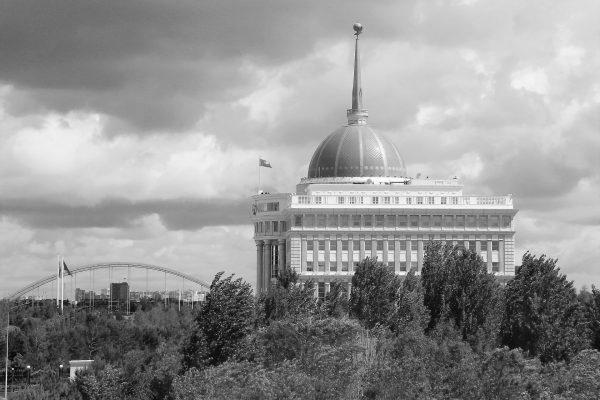What’s in Kazakhstan’s Constitutional Referendum? – The Diplomat
Warning: Undefined variable $post_id in /home/webpages/lima-city/booktips/wordpress_de-2022-03-17-33f52d/wp-content/themes/fast-press/single.php on line 26

2022-05-24 16:24:19
#Whats #Kazakhstans #Constitutional #Referendum #Diplomat
Crossroads Asia | Politics | Central Asia
On June 5, Kazakhs will vote on a package of reforms supposed to transform the nation from a super-presidential system to a “presidential system with a robust parliament.”
AdvertisementSix months after Kazakhstan’s President Kassym-Jomart Tokayev called protesters terrorists and requested support from the Russian-backed Collective Safety Treaty Group to quell mass unrest, citizens will participate in a referendum on constitutional reforms.
The vote will happen on June 5, just one month after the proposed reforms had been launched. The reform bundle addresses 33 separate articles – about one third of the overall constitutional articles – and was developed by a working group that Tokayev established in March. The reforms are mentioned to remodel Kazakhstan from a super-presidential system to a “presidential system with a robust parliament,” per Tokayev’s state of the union tackle on March 16.
A brilliant-presidential system is one the place parliaments and courts are only nominally independent, and the president and their administration have practically unlimited management over political decision-making. Kazakhstan’s first step to a super-presidential system was the adoption of a brand new structure in 1995 that was pushed by Nursultan Nazarbayev after dissolving an uncooperative parliament. Nazarbayev further consolidated his personal powers with constitutional amendments in 1998, 2007, and 2011.
Nazarbayev started to loosen the president’s control with constitutional amendments in 2017 that barely redistributed presidential powers to different branches of government and opened the trail for the election of native representatives, at least at the village level. Nonetheless, Nazarbayev slyly maintained his private control over Kazakhstan’s politics by together with provisions that protected him as “elbasy,” or leader of the nation.
Diplomat BriefWeekly NewsletterNGet briefed on the story of the week, and developing tales to watch throughout the Asia-Pacific.
Get the E-newsletterThe proposed constitutional reforms strip the structure of mentions of elbasy and the First President of the Republic, which some see as a continued signal of the Nazarbayev family’s fall from grace.
In addition to sidelining Nazarbayev, a number of proposed provisions would barely restrict the facility of the president. The president should not be a member of a political get together, which member of the working group Sara Idrysheva known as “the bravest step of our esteemed president.” In anticipation of this modification, Tokayev stepped down as chairman of the Amanat occasion – a rebranded model of Nazarbayev’s ruling Nur Otan occasion – on April 26. Additionally, the president can not override the acts of akims of oblasts, major cities, or the capital and shut members of the family of the president cannot maintain political posts.
A number of proposed measures give parliament extra power vis-a-vis the president. Kazakhstan’s parliament will remain bicameral, however the distribution of power between the higher and decrease houses will shift somewhat. The Senate will no longer have the ability to make new laws, and instead will just approve or reject legal guidelines passed by the Mazhilis. Furthermore, the method for choosing deputies to each homes will change.
First, the Mazhilis can be diminished to 98 deputies, following the abolition of nine seats appointed by the Assembly of the Peoples of Kazakhstan. Those seats shall be transferred to the Senate, and the Assembly of the Peoples will now solely get to nominate 5 deputies. The number of deputies appointed by the president might be diminished from 15 to 10.
AdvertisementSecond, Mazhilis deputies will likely be elected based on a blended system. Seventy percent of Mazhilis deputies will probably be chosen by proportional elections, and 30 percent might be instantly elected.
The one proposed modifications to the judicial system relate to the reestablishment of the Constitutional Courtroom. Kazakhstan had a Constitutional Court till the adoption of the 1995 constitution, which instituted a weaker constitutional council. The president still maintains a robust influence over the Constitutional Court docket’s makeup, however, with the ability to pick out the court’s chairman and four of the judges; parliament chooses the other three.
Tokayev has emphasised the importance of local governance, marked by the first-ever direct election of village akims and plans to introduce three new oblasts that can convey authorities bodies closer to the populations they represent. Perhaps probably the most disappointing aspect of proposed reforms is the lack of significant motion on local representation for residents of Kazakhstan’s largest cities. If the referendum passes, Kazakhstanis will get to vote for akims of oblasts, major cities, and the capital – nonetheless, the candidates may have been selected by the president. The proper to elect native leadership has been probably the most consistent calls for from Almaty residents, and this attempt to create selection is finally beauty.
The proposed reforms are necessary steps towards real consultant authorities in Kazakhstan; nonetheless, they don't essentially constitute forward motion. Many of the amendments are simply reinstating mechanisms of checks on presidential energy that beforehand existed, relatively than materially changing the connection between state and society, as Tokayev claims.
Quelle: thediplomat.com